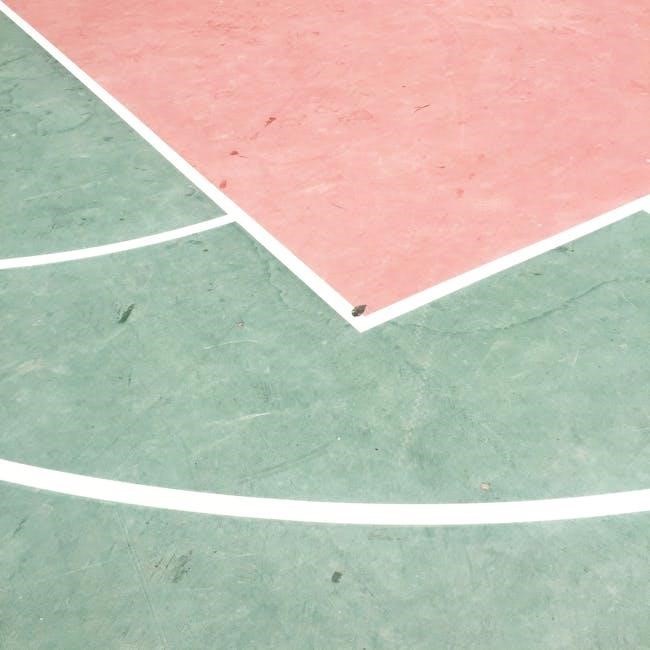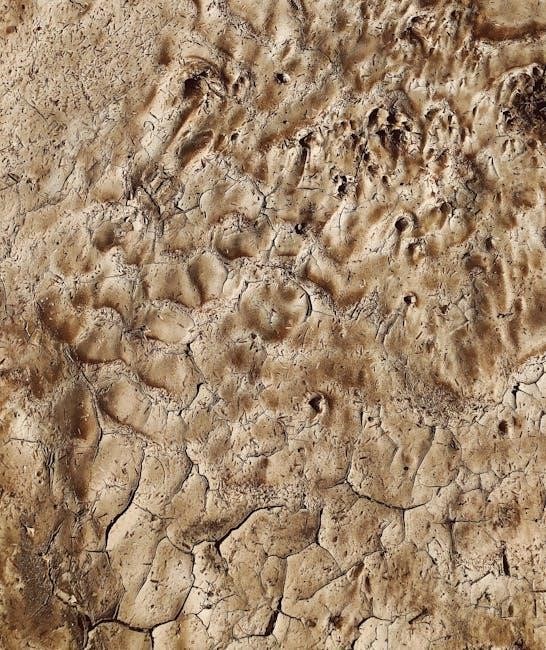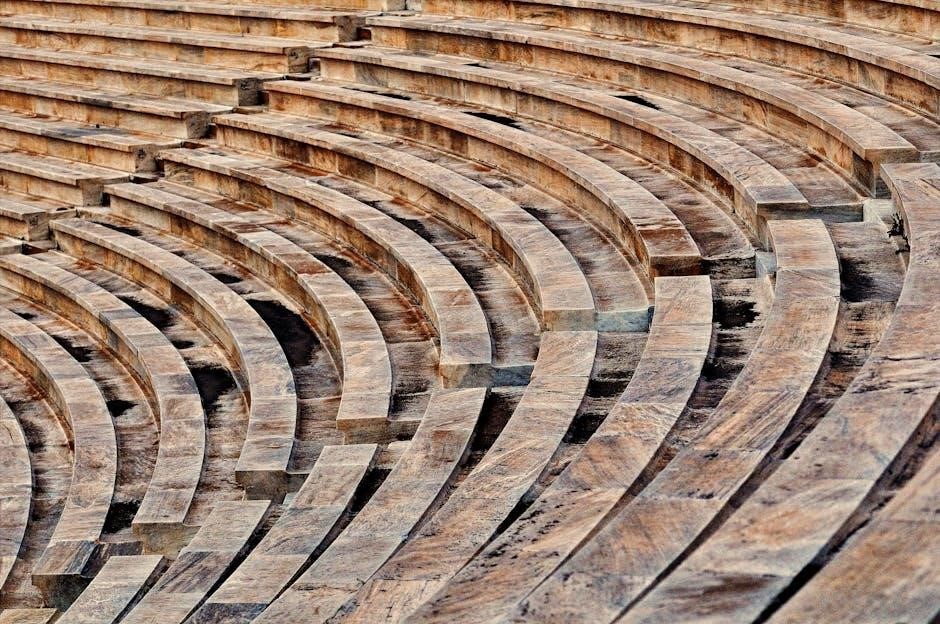Surface Area Worksheets: An Overview
Surface area worksheets are a comprehensive collection of exercises focusing on various solid figures. These resources offer a step-by-step approach, including counting unit squares and applying formulas to geometric shapes. They cover cubes, cones, cylinders, and prisms.
Definition of Surface Area
Surface area refers to the total area of all the surfaces of a three-dimensional object. Imagine wrapping a present; the amount of wrapping paper needed to cover the entire present represents its surface area. It’s a measure of the exposed area of a solid. Unlike volume, which measures the space inside an object, surface area measures the area on the outside. For complex shapes, calculating surface area involves finding the area of each face or curved surface and then adding them together. Understanding surface area is crucial in various fields, including engineering, architecture, and manufacturing, where it impacts factors like heat transfer, material usage, and design aesthetics. Surface area is expressed in square units, such as square inches, square centimeters, or square feet.
Types of Solid Figures Covered in Worksheets
Surface area worksheets commonly feature a variety of solid figures, providing comprehensive practice in calculating surface areas. Cubes and rectangular prisms, fundamental shapes with flat faces, are frequently included. Triangular prisms, which combine rectangular and triangular faces, offer additional complexity. Cylinders, characterized by their curved surfaces and circular bases, introduce a different approach to surface area calculation. Cones, with their circular base and pointed apex, present another unique challenge. Pyramids, featuring a polygonal base and triangular faces meeting at a point, are also commonly found. Some worksheets may include L-shaped prisms or composite solids, requiring students to combine their knowledge of different shapes. These diverse figures ensure a thorough understanding of surface area concepts.

Finding Surface Area: Methods and Techniques
Finding surface area involves counting unit squares, utilizing nets, and applying formulas. These techniques are essential for calculating the surface area of various geometric shapes and solids accurately.
Counting Unit Squares
One method for determining surface area involves counting unit squares, particularly useful for simple shapes represented on a grid. This approach provides a visual and intuitive understanding of surface area, especially for beginners. By counting the number of squares covering the exterior of a 3D object’s net, the total surface area can be directly determined. This method is foundational for grasping the concept before moving on to more complex formulas. Worksheets often use this to introduce the topic, allowing students to physically count and visualize the area, solidifying their understanding of this basic measurement technique. It provides a concrete understanding.
Using Nets to Determine Surface Area
Another effective technique involves using nets to determine surface area. A net is a 2D representation of a 3D shape, unfolded to show all its faces. By calculating the area of each face in the net and summing them, the total surface area of the 3D shape is found. Worksheets often provide nets of various solid figures, requiring students to measure each face and calculate its area. This method enhances spatial reasoning and provides a clear visual understanding of how the faces contribute to the overall surface area. It bridges the gap between 2D representations and 3D objects, and it offers a tangible way to calculate area.
Applying Formulas for Geometric Shapes
A key method in surface area calculations is applying specific formulas for different geometric shapes. Worksheets often include problems that require students to use formulas for cubes, rectangular prisms, cylinders, cones, pyramids, and other solids. These formulas provide a direct way to compute the surface area based on the shape’s dimensions, such as length, width, height, and radius. Students must identify the shape, recall the appropriate formula, and correctly substitute the given values to find the surface area. This approach reinforces understanding of geometric properties and promotes proficiency in algebraic manipulation. It also ensures students can apply formulas effectively.

Specific Shapes and Their Surface Area Calculations
This section will delve into calculating surface areas for specific geometric shapes. Detailed explanations and examples for cubes, rectangular prisms, cylinders, cones, and pyramids will be provided to enhance comprehension and calculation skills.
Surface Area of Cubes
A cube, a fundamental 3D shape, possesses six congruent square faces. Calculating its surface area involves finding the area of one square face and multiplying it by six. Since all sides of a cube are equal, the formula simplifies to 6 * (side length)^2. Worksheets often present varied side lengths, requiring learners to apply this formula repeatedly.
These exercises reinforce the concept of squaring a number and its application in geometric calculations. Problems may involve integer, decimal, or fractional side lengths, promoting versatility in applying the surface area formula. Visual aids might accompany the problems.
Surface Area of Rectangular Prisms
Rectangular prisms, ubiquitous in everyday life, present a slightly more complex surface area calculation than cubes. Unlike cubes, rectangular prisms have three pairs of congruent rectangular faces. The surface area formula, 2lw + 2lh + 2wh, accounts for length (l), width (w), and height (h). Worksheets provide dimensions for various rectangular prisms, challenging learners to apply the formula correctly.
Problems often involve visualizing the different faces and accurately substituting values into the formula. Some worksheets may include real-world scenarios, enhancing engagement and demonstrating practical applications of surface area calculations. Exercises can feature various units of measurement, encouraging unit conversion skills.
Surface Area of Triangular Prisms
Triangular prisms introduce an additional layer of complexity in surface area calculations. These prisms consist of two triangular faces and three rectangular faces. Surface area worksheets for triangular prisms require learners to calculate the area of both triangles (1/2 * base * height) and each rectangle (length * width).
The sum of these areas represents the total surface area. Worksheets often include diagrams with labeled dimensions, aiding visualization. Some problems might require using the Pythagorean theorem to find missing dimensions before calculating areas. Word problems involving the painting or wrapping of triangular prisms can also be included.
Surface Area of Cylinders
Cylinders, with their curved surfaces and circular bases, present a unique challenge in surface area calculations. Worksheets on this topic focus on applying the formula SA = 2πrh + 2πr², where ‘r’ represents the radius and ‘h’ represents the height of the cylinder.
Learners must accurately identify the radius and height from given diagrams or word problems. Worksheets may involve scenarios such as finding the amount of material needed to construct a cylindrical can or tank. Calculating the lateral surface area (2πrh) separately might also be included. Additionally, some problems may require using π ≈ 3.14.
Surface Area of Cones
Calculating the surface area of cones involves understanding their unique geometry, characterized by a circular base and a curved lateral surface converging at a vertex. Cones feature a slant height, denoted as ‘l,’ which is crucial for surface area determination.
Worksheets focusing on cone surface area typically require applying the formula SA = πr² + πrl, where ‘r’ is the radius of the base. Problems often involve finding the total surface area, including both the circular base and the curved lateral surface. Learners must accurately extract the radius and slant height from diagrams or word problems. Some exercises might necessitate calculating the slant height using the Pythagorean theorem if only the height of the cone is provided.
Surface Area of Pyramids
Surface area calculations for pyramids require considering the shape of the base and the number of triangular faces that ascend to a common vertex. The formula varies depending on whether the pyramid is regular (base is a regular polygon and faces are congruent isosceles triangles) or irregular.
Worksheets on pyramid surface area often begin with square pyramids, where the base is a square, and the lateral faces are congruent triangles. These worksheets typically involve calculating the area of the base and then summing the areas of all triangular faces. The slant height, which is the height of each triangular face, is essential for these calculations. More complex problems may involve hexagonal or pentagonal pyramids, requiring a deeper understanding of polygon geometry and area calculations.

Worksheet Resources and Availability
Numerous resources exist for surface area worksheets. These include printable PDFs suitable for classroom use and online generators that allow for customization. These resources help students practice and master surface area calculations.
Printable PDF Worksheets
Printable PDF worksheets are widely available resources for practicing surface area calculations. These worksheets often include a variety of problems, ranging from basic to more complex, covering different geometric shapes such as cubes, rectangular prisms, cylinders, cones, and pyramids. Many sites offer these worksheets for free, providing convenient access for both teachers and students.
These PDFs can be easily downloaded and printed, making them ideal for classroom activities, homework assignments, or extra practice at home. They frequently come with answer keys, enabling students to check their work and understand the solutions. The worksheets may also include word problems to enhance problem-solving skills.
Online Worksheet Generators
Online worksheet generators offer a dynamic alternative to static printable PDFs. These tools allow users to create customized surface area worksheets tailored to specific needs. Users can select the types of shapes they want to include, the difficulty level, and the units of measurement. Some generators even offer options to include word problems or focus on specific concepts.
The generated worksheets can often be downloaded as PDFs for easy printing or completed directly online. Many online generators provide answer keys or step-by-step solutions, making them valuable resources for both students and teachers. The interactive nature of these tools can make learning more engaging and efficient.

Answer Keys and Solutions
Answer keys are crucial for checking work and understanding solutions. They provide a reference for verifying accuracy and identifying mistakes in surface area calculations for various 3D shapes and problems.
Importance of Answer Keys
Answer keys hold significant importance in the learning process when working with surface area worksheets. These keys serve as valuable tools for students to self-assess their understanding and accuracy in calculating surface areas of various geometric shapes. They provide immediate feedback, allowing learners to identify mistakes and correct their approach.
Furthermore, answer keys promote independent learning and problem-solving skills. By comparing their solutions with the correct answers, students can analyze their thought processes and pinpoint areas where they need further clarification or practice. Answer keys also enable teachers and parents to efficiently evaluate student progress and provide targeted support.
Where to Find Answer Keys
Locating answer keys for surface area worksheets is generally straightforward, as many resources provide them alongside the worksheets themselves. Numerous websites dedicated to math worksheets, like Math Worksheets 4 Kids and Kuta Software, often include answer keys as part of their downloadable packages. Educational platforms and teacher resource sites such as Teachers Pay Teachers may also offer worksheets with accompanying answer keys.
Textbooks and workbooks that cover surface area calculations usually contain answer keys in the back. Online worksheet generators sometimes provide answer keys upon completion of the exercise. Always check the source of the worksheet for readily available answer keys.
